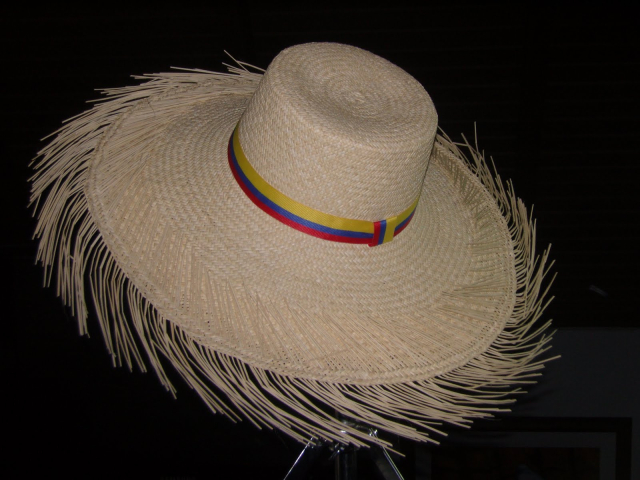The toquilla straw hat is one of Ecuador's most iconic crafts, recognized worldwide for its quality, elegance, and tradition. Although it is commonly known as the "Panama hat," its origin is entirely Ecuadorian. This handcrafted piece stands out for its fine weave, its strength, and its lightness, making it an accessory appreciated globally. In this article, we will explore its history, manufacturing process, cultural and economic importance, as well as its international recognition and the challenges it faces today.
History and origin
The origin of the toquilla straw hat dates back to the province of Manabí, on the Ecuadorian coast. There are records of its manufacture from pre-Columbian times, when the inhabitants of the region used the fibers of the "Carludovica Palmata" plant to weave clothes and accessories. With the arrival of the Spanish, these techniques were perfected and gave way to the creation of the hats we know today. During the 19th century, the production of these hats expanded to the provinces of Azuay and Cañar, where cities such as Cuenca became important manufacturing and export centers.
The name "Panama hat"
Despite their Ecuadorian origin, these hats are known worldwide as "Panama hats." This name is due to the fact that, during the gold rush in the 19th century, many gold seekers traveling from the United States to California passed through Panama and bought these hats as protection from the sun. In addition, in 1906, American President Theodore Roosevelt was photographed wearing one of these hats during a visit to the Panama Canal, which contributed to popularizing the name by wrongly attributing it a Panamanian origin.
Manufacturing process
The making of a straw hat is a meticulous process that can take from weeks to several months, depending on the fineness of the weave. It all starts with the harvesting of the leaves of the "Carludovica Palmata", which are subjected to a cooking and drying process to obtain high-quality fibers. Then, the artisans carry out the weaving by hand, using different techniques that vary according to the region and the quality of the desired hat. Montecristi hats, for example, are considered the finest and can be sold at high prices in international markets.
Once woven, the hat goes through several stages of refinement, including azocado (cutting off excess straw), washing, bleaching, pressing and ironing. Finally, details such as ribbon and tafilete are added, ensuring that the final product is of the highest quality.
Cultural and economic importance
The toquilla straw hat not only represents a traditional craft, but is also a key element in the economy of many Ecuadorian communities. The production of these hats generates employment for thousands of families, especially in the provinces of Manabí and Azuay. In addition, the international trade of these hats has allowed Ecuador to gain global recognition as a country that produces high-quality crafts.
International recognition
On December 5, 2012, UNESCO included the "Traditional Ecuadorian Straw Hat Weaving" in the Representative List of the Intangible Cultural Heritage of Humanity. This recognition highlights the cultural and social importance of this garment and seeks to promote its preservation through programs to transmit knowledge to new generations. In addition, this recognition has strengthened the cultural identity of Ecuadorians and has contributed to the promotion of tourism in the country.
Challenges and preservation
Despite its recognition and prestige, the production of the toquilla straw hat faces several challenges. Globalization and mass production have introduced lower-quality imitations into the market, putting the value of authentic hats at risk. In addition, the lack of incentives for artisans has led to a decline in the number of people dedicated to this activity.
To address these challenges, the Ecuadorian government and various organizations have implemented initiatives to protect and promote the production of authentic hats. These include creating seals of authenticity, promoting craft fairs, and supporting training workshops for new artisans.
Conclusion
The toquilla straw hat is more than just an accessory; it is a symbol of Ecuadorian identity, tradition and art. Its history, its meticulous manufacturing process and its international recognition have made it an emblem of the country. Despite the challenges it faces, its legacy lives on thanks to the efforts of artisans and the support of initiatives that seek to preserve this tradition for future generations. By valuing and promoting the purchase of these hats, you are not only supporting Ecuadorian artisans, but also contributing to the conservation of one of the most important cultural manifestations in the world.
Sources:
Ministry of Tourism of Ecuador
Wikipedia in Spanish: "Toquilla straw hat"
Ecuador.travel: "Toquilla straw hat, a heritage garment with an Ecuadorian stamp"
UNESCO: "Traditional weaving of the Ecuadorian toquilla straw hat"
Toquilla Straw Hat Museum in Cuenca, Ecuador
